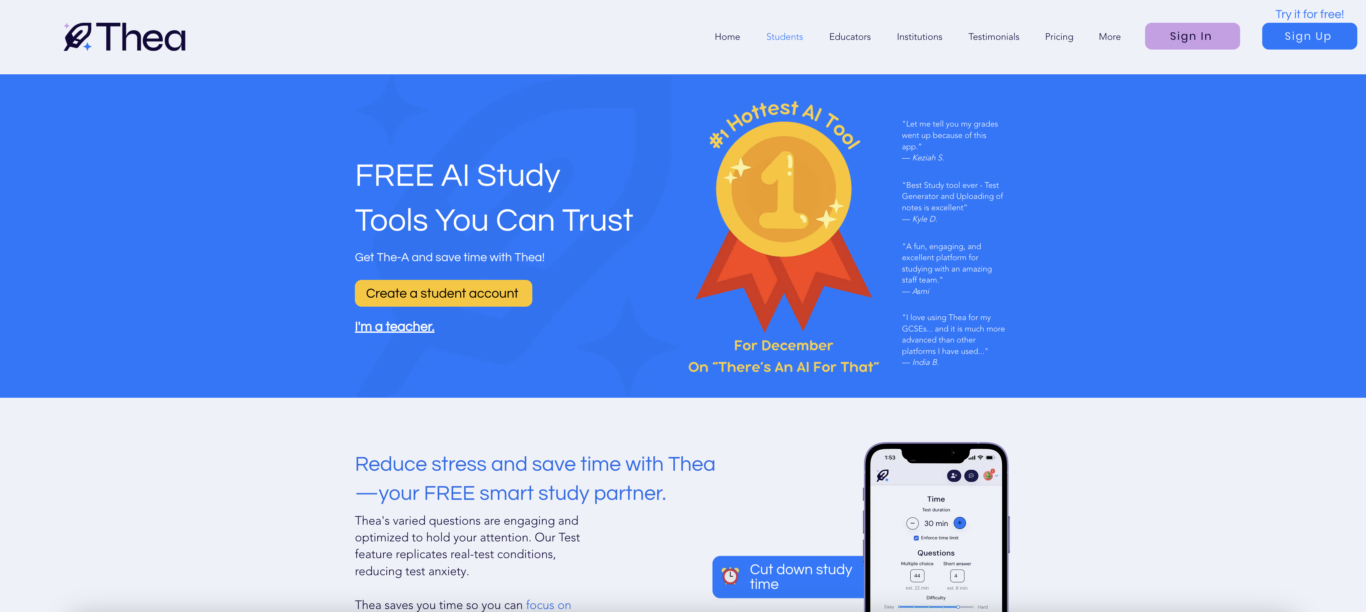Ransomware Exposed: Important Facts for 2024 and Essential Protection Tips for 2025
What is Ransomware? Ransomware is a malicious application that locks a person’s data, which is impossible to access until they pay money. Cybercriminals get into systems through phishing emails, software weaknesses, or more sophisticated techniques such as session hijacking. Statistics of Surge in Ransomware Groups and Attacks Ransomware is more of a threat in 2024 compared to the present. Such attacks are becoming more frequent, and so is their complexity. Moreover, the cost of such attacks is increasing. Here are some vital facts and insights about this looming threat: How Common Ransomware is in Cyberattacks It is estimated that ransomware has 10% of data breach statistics. It is believed that ransomware is the third most used malware as the primary tactic for launching an attacking threat for most cybercrime elements. Its different types continuously change since newer ones are more specific and advanced in methodology. Ransom Demand and Costs The ransom demand has risen to an average of $2.73 million for 2024 from $1.91 million in 2023 as ransomware groups have become more aggressive and target more prominent companies with deeper pockets. Every ransomware incident now costs around $1.85 million to handle the ransom, recovery costs, and lost time. Impact on Recovery and Downtime: 97% of organizations get hit with ransomware attacks that can recover the encrypted data later, but all this takes massive money and time. Companies generally face as many as 24 lost days of productivity following a ransomware attack. It’s a big jump when discussing falling in terms of efficiency and income. Frequency and Trends of Attacks Over the last 5 years, there is a huge 13% ransomware attack rate. From the yearly reports, attacks are up every year. With older groups refining their approach and new factions emerging, double and triple extortion schemes are being developed to hit victims’ clients or customers. Industry-specific Vulnerabilities Healthcare Industry The healthcare industry is among the most vulnerable. The healthcare industry is among the areas that are most attacked. Such attacks lead to stolen patient data, interrupted services, and delayed treatments. These attacks affect people’s lives widely as healthcare organizations quickly pay ransomware to start activities. Money Business The financial sector has more threats because attackers want to take valuable financial data. Cybercrime costs in this area, which include ransomware attacks, will reach $9.5 trillion worldwide by 2024. ### Learning and Community Support Ransomware attacks on schools and other local government agencies are widespread due to the absence of proper security measures. Global Reach and Strong Growth Ransomware threats had increased by 38% in the first half of 2024 compared to the same period in 2023, and Spain ranked fifth in ransomware malware attacks globally. Ransomware attacks have grown the most in regions that do not have a proper cybersecurity framework in place. Adapting Tactics and Techniques Used by Ransomware Ransomware gangs use AI-based malware to make their activities more efficient and secret. The Ransomware-as-a-Service model is becoming popular as it lets lesser-skilled cyber criminals conduct complex attacks. These hackers are utilizing zero-day exploits and are exploiting the vulnerabilities in cloud-based infrastructure to attack organizations. Key Takeaways for Defense in 2025 and Beyond This is the situation with the increasing level and cost of ransomware, and it calls for: Proactive security measures are MFA, zero-trust system, and periodic software updates. Deep planning of data backup to minimize the impact of encryption. Training employees help identify phishing, which is the most common method through which ransomware infiltrates. Hire Cyber Security Experts or Utilize Automated Security Tools to monitor, detect, and remove malware, vulnerabilities, and unusual traffic to your website or app. This data shows that one needs to be more vigilant and spend money on cybersecurity to fight the ever-changing ransomware threat in 2024. Most Common Ransomware Attacks of 2024 Ransomware attacks have been much more frequent and destructive in 2024 compared to previous years. Such attacks targeted several industries that created serious issues. There is a list of several major ransomware incidents faced in the year: Change Healthcare Attack Ransomware reportedly attacked UnitedHealth’s Change Healthcare online prescription processing system in early 2024. This affected most health providers and their patients in the United States. Services were recovered after the ransomware group BlackCat (ALPHV) received $22 million. Ivanti VPN Exploitation In January 2024, hackers attacked unknown vulnerabilities on Ivanti’s Connect Se

What is Ransomware?
Ransomware is a malicious application that locks a person’s data, which is impossible to access until they pay money. Cybercriminals get into systems through phishing emails, software weaknesses, or more sophisticated techniques such as session hijacking.
Statistics of Surge in Ransomware Groups and Attacks
Ransomware is more of a threat in 2024 compared to the present. Such attacks are becoming more frequent, and so is their complexity. Moreover, the cost of such attacks is increasing. Here are some vital facts and insights about this looming threat:
How Common Ransomware is in Cyberattacks
- It is estimated that ransomware has 10% of data breach statistics. It is believed that ransomware is the third most used malware as the primary tactic for launching an attacking threat for most cybercrime elements.
- Its different types continuously change since newer ones are more specific and advanced in methodology.
Ransom Demand and Costs
- The ransom demand has risen to an average of $2.73 million for 2024 from $1.91 million in 2023 as ransomware groups have become more aggressive and target more prominent companies with deeper pockets.
- Every ransomware incident now costs around $1.85 million to handle the ransom, recovery costs, and lost time.
Impact on Recovery and Downtime:
- 97% of organizations get hit with ransomware attacks that can recover the encrypted data later, but all this takes massive money and time.
- Companies generally face as many as 24 lost days of productivity following a ransomware attack. It’s a big jump when discussing falling in terms of efficiency and income.
Frequency and Trends of Attacks
- Over the last 5 years, there is a huge 13% ransomware attack rate. From the yearly reports, attacks are up every year.
- With older groups refining their approach and new factions emerging, double and triple extortion schemes are being developed to hit victims’ clients or customers.
Industry-specific Vulnerabilities
Healthcare Industry
- The healthcare industry is among the most vulnerable. The healthcare industry is among the areas that are most attacked. Such attacks lead to stolen patient data, interrupted services, and delayed treatments.
- These attacks affect people’s lives widely as healthcare organizations quickly pay ransomware to start activities.
Money Business
- The financial sector has more threats because attackers want to take valuable financial data.
- Cybercrime costs in this area, which include ransomware attacks, will reach $9.5 trillion worldwide by 2024.
- ### Learning and Community Support
- Ransomware attacks on schools and other local government agencies are widespread due to the absence of proper security measures.
Global Reach and Strong Growth
- Ransomware threats had increased by 38% in the first half of 2024 compared to the same period in 2023, and Spain ranked fifth in ransomware malware attacks globally.
- Ransomware attacks have grown the most in regions that do not have a proper cybersecurity framework in place.
Adapting Tactics and Techniques Used by Ransomware
- Ransomware gangs use AI-based malware to make their activities more efficient and secret. The Ransomware-as-a-Service model is becoming popular as it lets lesser-skilled cyber criminals conduct complex attacks.
- These hackers are utilizing zero-day exploits and are exploiting the vulnerabilities in cloud-based infrastructure to attack organizations.
Key Takeaways for Defense in 2025 and Beyond
This is the situation with the increasing level and cost of ransomware, and it calls for:
- Proactive security measures are MFA, zero-trust system, and periodic software updates.
- Deep planning of data backup to minimize the impact of encryption.
- Training employees help identify phishing, which is the most common method through which ransomware infiltrates.
- Hire Cyber Security Experts or Utilize Automated Security Tools to monitor, detect, and remove malware, vulnerabilities, and unusual traffic to your website or app. This data shows that one needs to be more vigilant and spend money on cybersecurity to fight the ever-changing ransomware threat in 2024.
Most Common Ransomware Attacks of 2024
Ransomware attacks have been much more frequent and destructive in 2024 compared to previous years. Such attacks targeted several industries that created serious issues. There is a list of several major ransomware incidents faced in the year:
Change Healthcare Attack
Ransomware reportedly attacked UnitedHealth’s Change Healthcare online prescription processing system in early 2024. This affected most health providers and their patients in the United States. Services were recovered after the ransomware group BlackCat (ALPHV) received $22 million.
Ivanti VPN Exploitation
In January 2024, hackers attacked unknown vulnerabilities on Ivanti’s Connect Secure VPNs. The attacks targeted thousands of appliances, some being the U.S. Cybersecurity and Infrastructure Security Agency, CISA. The attacks were linked with a spying group from China named UNC5221, which explains several problems with devices on a network security basis.
CDK Global Ransom Payment
In mid-June 2024, CDK Global Company is developing car dealership software. This company experienced a ransomware attack with quite a few issues. CDK reportedly paid a $25 million ransom to recover relatively soon, but the issues lasted two weeks, showing how challenging it is to fix things quickly even after paying the ransom.
UMC Health System Breach
On September 26, 2024, UMC Health System suffered from a ransomware attack. Major issues that arise following the treatment of patients include diverting emergency patients. The seriousness of ransomware and its danger to healthcare systems and the safety of patients is grave.
Salt Typhoon Spying Plan
This group was named Salt Typhoon, which is linked to China. This hacking group has performed tremendous breaches on the huge telecommunication companies of the United States, including Verizon, AT&T, and T-Mobile. The compromised data included communications with officers in the United States, which creates national security issues for such attacks.
Attack on Water Treatment Plants
Several ransomware attacks were conducted targeting U.S. water treatment plants before 2024. Such ransomware attacks target essential services to disrupt them. The public started getting concerned with the safety of those essential public services and the danger posed by massive destruction.
SOHO Router Hijacking Campaign
This was intended to capture miniature office/home office routers to unleash a massive attack on a significant US infrastructure. The plan had allowed penetration into the networks of main infrastructure organizations and demonstrated the vulnerability of almost all devices used.
Snowflake Data Theft
Hackers stole data from users of the cloud data platform Snowflake. The hackers stole the users’ data in an operation carried out in 2024. They extracted private information and blackmailed the same users for money using such data.
LockBit Ransomware Operations
The LockBit ransomware group remained active in 2024, targeting several organizations across the globe. In May 2024, they stated to be behind an attack on Canadian retailer London Drugs that demanded a ransom of $25 million. Though law enforcement attempted to stop them, LockBit was still active so that it may evolve and continue.
Rhysida Ransomware Emerged
It came with a new threat name for 2024, the ransomware group called Rhysida, attacking large organizations, one being U.S. healthcare; they locked the data, threatening to publish it in case their ransoms weren’t paid. This was something else new added to the changing world of ransomware.
The same events show how the methods of ransomware groups change, and the importance of the steps to address the strong cybersecurity needs in all areas for mitigating such attacks’ effects.
Most Targeted Sectors/Industry By Malware and Ransomware
Targeted industries (victims) such as health, financial, etc.
Ransomware attacks have increased in 2024, with their frequency and sophistication being much higher than earlier as they target more industries. Affected sectors are:
Health Sector
The ransomware attacks on the healthcare sector have increased substantially over the past four years. This has made recovery take longer time, and only 22% recovered, the smallest percentage in the last four years, dropping from 47% of respondents who reported recovery within that time frame in 2023.
Conversely, 37% now took a month to recover, up from 28% compared to the previous year. Recovery cost is now at an average of $2.57 million.
The attackers targeted system vulnerabilities and compromised the credentials, and an astonishing 95% of all attempts were against the backup systems.
Financial Support
Cybercriminals continue to target financial services with ransomware, thinking this is a good time to steal valuable data. Costs from cybercrime reached almost $9.5 trillion in 2024.
Financial institutions must take the initiative to devise ways to protect sensitive data from thieves with better cybersecurity measures. For them, this is important in protecting their clients and sustaining consumer confidence.
Acquisition
Schools and colleges continue to struggle with ransomware attacks. The country ranked at the top for worldwide education ransomware attacks with 60 percent in the United States; it disrupts academics, ruins financial stability, and negatively affects reputation.
Building Industry
The construction industry has seen a sharp increase in ransomware attacks, with 83 reported victims in the third quarter of 2024, a 7.8 percent increase from the 77 attacks noted in the second quarter. Some of the most active groups include RansomHub and Infrastructure and its related industries groups.
Essential Frameworks
Nowadays, ransomware groups target critical systems such as water treatment plants and telecommunications companies. It attacks essential services and threatens public safety and national security.
Small Office/Home Office (SOHO) Spaces
They obtained the SOHO routers to connect to the enormous networks. The weaknesses exploited are where these remote work systems lie. This opened access for attackers to critical infrastructures and corporate environments; it has demonstrated that a high necessity exists for solid security in the configuration of remote work.
Cultural Institutes
Libraries and museums are not exempted from this trend; other cultural institutions are not. Data gets encrypted using ransomware from hackers, with the promise to publish them unless a ransom is paid. These have, therefore, lit upon vulnerabilities of an unsecured organization that may not possess better cybersecurity protection.
This evolving strategy of ransomware groups has opened new dimensions in the threat landscape, such as hiring penetration testers to refine attacks and the emergence of new factions, such as RansomHub.
All such businesses must immediately introduce stringent security control into their work with general systems maintenance, educational empowerment among staff, and potent backup systems for countering ransomware attacks.
Prevention Strategies for 2025: Protect the Future
Considering the rise of ransomware threats seen during 2024, organizations must develop strong prevention mechanisms to protect their operations in 2025. Such steps would include:
Implement Strong Multi-Factor Authentication
The session hijacking technique and other techniques to bypass MFA have become so popular lately that deploying advanced MFA solutions is highly required, which resist advanced attacks. Periodical updates and monitoring of the MFA system help identify unauthorized access.
Endpoint Security Improvements
Despite the existence of antivirus or EDR solutions, many devices have been compromised. Organizations must ensure that endpoint security tools are updated, configured correctly, and can detect advanced threats. Regular audits and penetration testing can identify vulnerabilities before attackers exploit them.
Conduct Regular Employee Training
Human error is still a significant factor in successful ransomware attacks. Continuing cybersecurity awareness training will inform the workforce what to look for and how to react to phishing attempts and other malicious activities. Simulated attack exercises can reinforce such training as well.
Maintain Regular Backups
Critical data should be scheduled to be backed up regularly and kept secure, offline. Restoration should be tested periodically to confirm that data access is retained and not damaged.
Network Traffic Monitoring
Network traffic-pattern analysis can also reveal unknown traffic indicative of a ransomware attack and install advanced network-monitoring systems that allow us to be aware of any unusual patterns pointing to a ransomware attack.
Apply Security Patches Promptly
Unpatched vulnerabilities form more frequent doorways for ransomware. A tight patch schedule would allow updating all systems and applications on time to reduce potential exploitation.
Develop and Test the Incident Response Plan
An effective incident response plan gives power to organizations to respond speedily and effectively to ransomware attacks. The organizations should practice regularly and review their plan so that when an actual event occurs, they need not face much downtime and economic loss.
Consult With Cybersecurity Professionals
Engaging with information-sharing networks with cyber security professionals can give insight into emerging threats and effective defense strategies. This collaboration significantly enhances an organization’s capacity to anticipate or counteract ransomware tactics.
These can enhance an organization’s defenses against ransomware attacks and fare well in adapting to the ever-changing threat landscape predicted for 2025.
Conclusion
Protect Your Business Today with Certera’s advanced cybersecurity solutions. Safeguard against ransomware with advanced website security, email protection, software updates, and real-time defense. Secure your systems now with our automated tool!




















